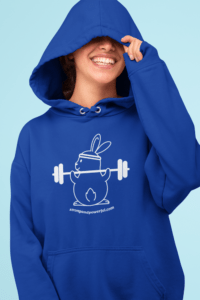Fit 262 Food Label Trickery, Live Workouts and Diet Myths
Food labels fool you many ways! Listen and learn how to spot the tricks!
Fact or fiction in fat loss:
Can you eat fast food and lose weight?
What is the best measurement of weight loss?
If eating less to lose weight is all you have to do, then why aren’t you at your goal weight?
Update on Live Workouts!
Be sure to sign up for our emails to get notice for the Live Workout schedule!
Food label deception Light vs low fat vs fat free
Food labels can be very confusing. Sometimes something is a lighter version and it’s still really not good for you! If you start looking at labels and comparing you’ll see this. A great example of this labeling is Pop Tarts. Compare the label of regular Pop Tarts and low fat Pop Tarts, well there is only 1 or 2 grams difference in fat! I think one has to 2 and one has 4, and reality Pop Tarts are really all sugar not a whole lot of fat to begin with. So the difference is not that much, yes I one could say 50% less-which sounds like a lot, but when you are talking 2 and 4 grams, let’s face it, that’s not that much difference! Now when you talking 18 grams versus 8, yes that’s a huge difference. So you need to start reading labels and don’t just grab something because it says “low fat” or “light”, look at the labels and compare it to the original version and see what the differences are. Sometimes there is no difference! Shocking, I know but you can see how a label of 50% less fat on the Pop Tart would sound phenomenal but the fact that there is hardly any fat to begin with makes it a pointless claim! Remember, one item can have maybe 1 gram of fat and then the “light” version has less than the original they can still call it light even though we know the difference is negligible.

Food Label Foolery Part 2: Serving size
Now there is another very important piece of information on the food label… and that is your serving size. Your concept and the food company’s concept of a serving size are probably not the same. Take a look at the serving size on the level of a food you might pick, is that an accurate representation of the amount that you would eat? A more realistic measurement may be three times a suggested serving size!
For example, you might see that your favorite frozen yogurt has only 4 grams of fat per serving. The label shows a serving size of half a cup, yet after you measure your normal serving you realize that your normal is actually one and half cups now that equals 12 grams of fat… and that’s a big difference. So if you think you can eat the suggested serving size which in the case of the frozen yogurt is just half a cup then go for it, but you know what, if you realize that you are going to eat the whole thing or your serving size is much more than half a cup then you might want to reconsider or find a product that will fit into what your realistic serving size is going to be and that has the amount of grams of fat or calories that you want to ingest.
A great way to educate yourself on serving sizes is to look at a product and take a guess of how many servings you think item has and then look at the label. Do this just a couple of times you will start to get the idea of how the deceiving labels can be!
When looking at pre-packaged or pre-made foods how do you know what will be a good balance of nutrients? How do you know if something is right for your plan?
Here’s the trick, you should look for foods where the grams of carbohydrate are not more than twice the grams protein. Many so called healthy foods may contain natural and healthy ingredients, but be much higher in carbs than protein. This is fine if you are doing an endurance activity like mountain climbing, but if your goal is fat loss then its not so good. If there are significantly more carbs than protein, your blood sugar levels won’t be as steady and sustained as a better ratio of protein to carb. A bad ratio is going to send your body into a zone where it might hold on to fat. So if you are mountain climbing for hours a day, that would be good for you, but not if fat loss I s your goal. For example, you might think that yogurt is a healthy combination of nutrients, yet read the label and most of the time it’s very high in carbohydrate and very low in protein so it doesn’t quite make that ratio of two to one.
We tend to eat a lot of the same foods so if you plan this out and do a little bit of arithmetic you will be a lot more educated at the store.
Slowing down and taking a look at food labels and understanding these key points will help you tremendously when you are shopping.
Diet Myths
You actually can have fast food and lose weight if you make an educated choice. Listen to the show for more!
False-Eat less to lose weight! Listen and learn about starvation mode and the damage it does!
False-The scale is the best measurement of weight loss. No,no,no!!! Measurements are the best! Hide the scale! It does more harm than good!




